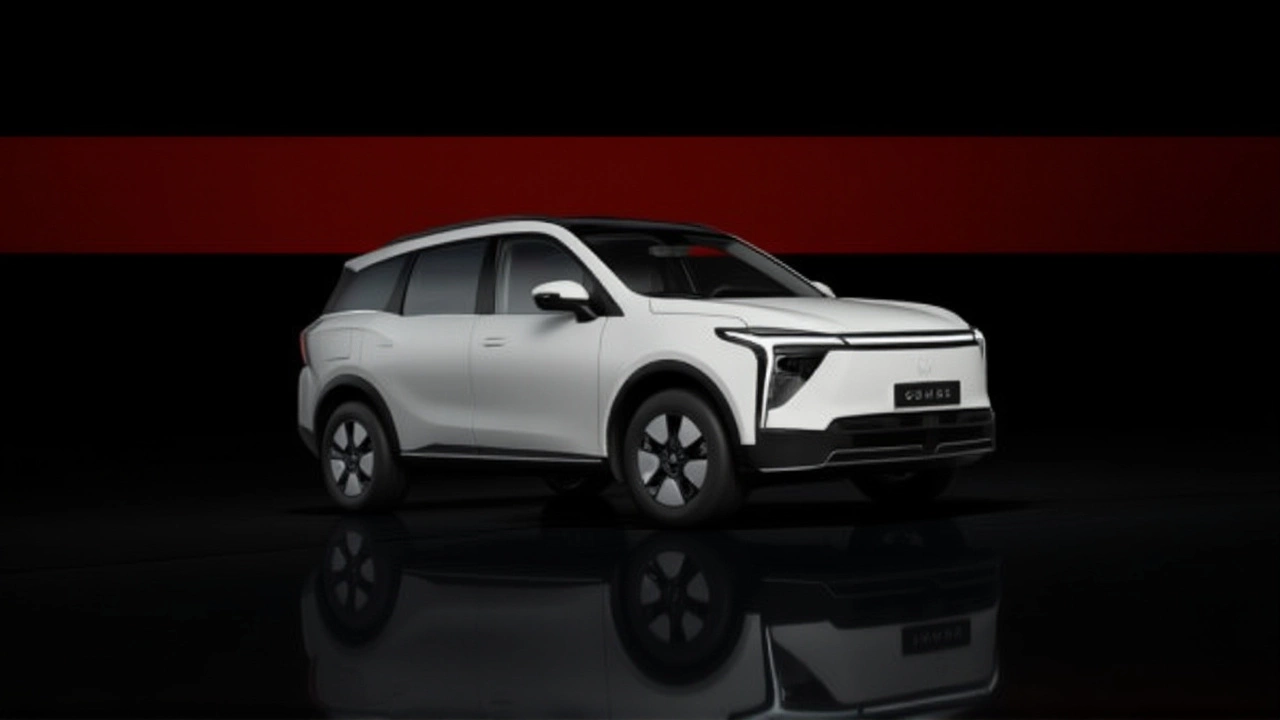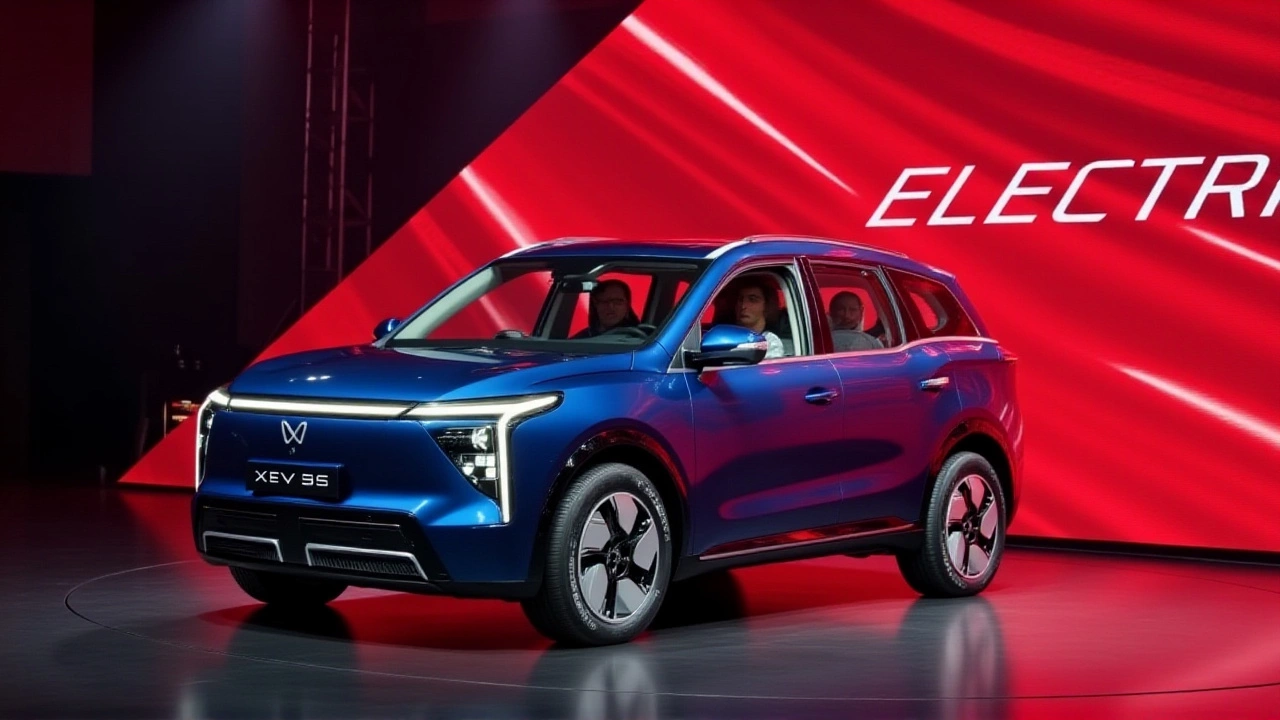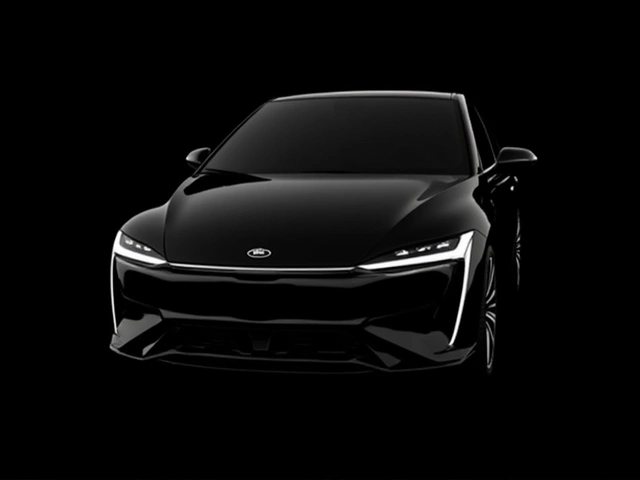On November 27, 2025, Mahindra & Mahindra Limited stunned the Indian automotive market by launching the XEV 9S — its first-ever three-row electric SUV — at the Scream Electric event in Bengaluru. Priced at ₹19.95 lakh ex-showroom, the XEV 9S undercuts its sibling, the XEV 9e, by ₹1.95 lakh, despite both models sharing the same INGLO electric architecture. The move isn’t just about pricing — it’s a bold declaration that Mahindra isn’t just entering the electric SUV space. It’s redefining it.
A New Kind of Family EV
The XEV 9S isn’t just an electric XUV700. It’s something more intentional. With a 679-kilometer range on a single charge, a running cost of just ₹1.2 per kilometer, and 380 Nm of torque, it’s built for long drives and daily commutes alike. But what sets it apart isn’t the numbers — it’s the experience. Inside, there are five screens: three in the front dashboard, and two rear-facing displays for second-row passengers. Ambient lighting shifts colors softly, turning the cabin into a lounge. The design, as noted by Live Hindustan, feels like a premium spaceship — clean lines, matte black trim, and zero physical clutter. Even the steering wheel feels different. Lighter. Quieter. More thoughtful.Electric Boss Mode: The Real Game-Changer
Here’s the twist: Electric Boss Mode isn’t a marketing gimmick. It’s a revelation. In the conventional XUV700, the ‘Boss Mode’ lets you manually slide the front passenger seat forward for extra legroom — a nice touch, but clunky. In the XEV 9S, second-row passengers can control the front seat with a dedicated touchscreen panel. Slide it forward. Recline it. Lock it. All without yelling over their shoulder. No fumbling. No awkwardness. Just quiet, electric control. This isn’t just convenience — it’s dignity. For parents, for elders, for anyone who’s ever been crammed in the back of a seven-seater, this changes everything.And the sliding second-row seats? Enabled by the flat skateboard battery design of the INGLO platform, they glide smoothly, offering flexibility that even the best ICE-based 7-seaters can’t match. The rear end? Sleek LED tail-lamps that echo the XUV700 but feel more refined — like a designer remix of a classic tune.

Why This Launch Matters
Mahindra didn’t just drop a new car. They dropped a blueprint. For the first time in India, a three-row electric SUV exists that doesn’t compromise on space, tech, or comfort. The Tata Harrier EV? Too small. BYD eMAX 7? Still waiting for delivery. The Atto 3? Five seats only. The XEV 9S fills a gap that no one even admitted was there. As Car and Bike put it: “There is no direct competition.” That’s not a boast — it’s a fact. And Mahindra knows it.The timing? Perfect. Exactly one year after launching the BE 6 and XEV 9e in November 2024, Mahindra has gone from two EVs to four — including the BE Rall-E, unveiled at the same event. This isn’t slow evolution. It’s a sprint. And they’re not just chasing Tesla or BYD. They’re building something for Indian families — for the school runs, the weekend trips to Coorg, the multi-generational road trips where everyone needs to be comfortable.
What’s Next?
Don’t expect to see the XEV 9S on showroom floors this month. Despite the November 27 launch, deliveries are slated for early 2026 — following the same pattern as the XEV 9e. That’s a deliberate move. Mahindra wants to scale production, train dealerships, and ensure software updates roll out cleanly. But interest is already surging. Pre-bookings reportedly exceeded 12,000 within 48 hours of the launch.And the real question? Will competitors scramble to match it? Tata Motors is rumored to be working on a 7-seater EV, but nothing’s confirmed. Hyundai and Kia are focused on smaller EVs. Maruti’s EV plans remain vague. For now, Mahindra owns this space. Alone.

The Bigger Picture
Founded in 1945 and headquartered in Mumbai, Mahindra has spent decades building trust in rugged SUVs. Now, they’re betting that trust will carry over to electric mobility. The XEV 9S isn’t just a product. It’s a statement: Indian families deserve electric vehicles that don’t ask them to sacrifice space, safety, or sophistication. And with ₹19.95 lakh as the entry point, they’re making it accessible — not just aspirational.The INGLO architecture, once just a concept, is now the backbone of a full EV lineup. And the XEV 9S? It’s the crown jewel.
Frequently Asked Questions
How does Electric Boss Mode work in the XEV 9S?
Second-row passengers use a dedicated touchscreen panel to electrically slide and recline the front passenger seat — no manual levers or shouting required. The system is powered by the vehicle’s main battery and includes safety locks to prevent accidental movement during driving. It’s a first in India’s EV market and significantly improves comfort for families traveling with children or elderly passengers.
Why is the XEV 9S priced lower than the XEV 9e despite being larger?
Mahindra priced the XEV 9S at ₹19.95 lakh — ₹1.95 lakh below the XEV 9e — to aggressively capture the premium 7-seater segment. While both use the same INGLO platform, the XEV 9S benefits from economies of scale, shared components, and strategic positioning. The goal isn’t to maximize margin per unit but to dominate a category with no direct competition.
When will the XEV 9S be available for delivery?
Despite its November 2025 launch, deliveries are expected to begin in early 2026, following Mahindra’s pattern with the XEV 9e. The delay allows for production ramp-up, dealer training, and software optimization. Pre-bookings have already surpassed 12,000 units, indicating strong consumer confidence in the model’s promise.
How does the XEV 9S compare to the BYD eMAX 7 and Tata Harrier EV?
The XEV 9S offers a longer range (679 km vs. ~500 km for competitors), five screens versus three or four, and the unique Electric Boss Mode. While the BYD eMAX 7 is still in pre-launch phase and Tata’s 7-seater EV remains unconfirmed, the XEV 9S is already in order books. It also has more interior space than the Harrier EV, which is based on a 5-seater platform.
Is the XEV 9S built on the same platform as the XUV700?
Yes, but with critical upgrades. The XEV 9S shares the XUV700’s dimensions and family-focused design, but it’s built on Mahindra’s flat skateboard INGLO EV architecture. This means a lower center of gravity, no transmission tunnel, and more cabin space. The body is electric-specific, not a retrofit — making it safer and more efficient than converting an ICE vehicle.
What’s the significance of the five-screen interior?
The five screens — three for the driver and front passenger, two for rear-seat entertainment — turn the cabin into a mobile lounge. Unlike generic infotainment setups, these are integrated with climate controls, seat adjustments, and connectivity features tailored for families. The rear screens allow kids to watch content without distracting the driver, and they’re angled to reduce glare. It’s not tech for tech’s sake — it’s designed for real-life use.





